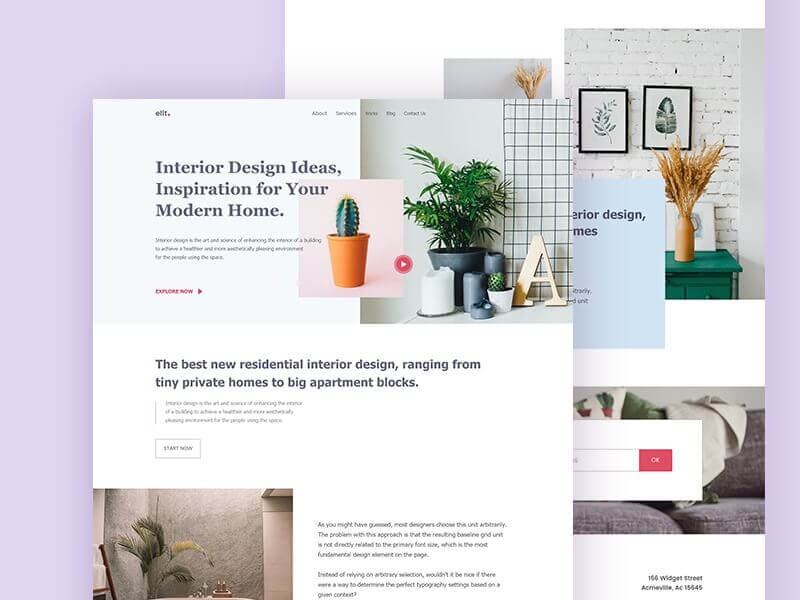
There are plenty of people who are familiar with designing websites, but creating a mobile site and apps are something that can be confusing. If this seems like a familiar problem, the following tips will help you with your design questions. The advice is up-to-date and helpful.
Always check your website from a variety of browsers in different areas of the country or world. This will help you to make sure your site works for everyone. Make sure that your site is compatible with all popular browsers. Have a friend or colleague pull up your site in an alternate operating system to ensure their view is comparable to your own.
Ensure that the site can be scanned with ease. Studies have shown that people usually quickly scan a website rather than thoroughly read it over, as they try to find the stuff that might be interesting to them. Make sure your text is placed in sections, so readers can look over it quickly. Keep the most pertinent information near the top of the page. This gives your visitors a better experience.
Be certain to ‘remember’ personal information that might have to be re-entered by the same site visitor. For instance, if a visitor registers for your newsletter and they are going to use the same information to make a purchase, be sure the data they’ve already entered is kept, so they do not have to re-enter the same information. Developing “sticky” data like this streamlines the user experience, and your visitors will likely appreciate the convenience.
Use shortcuts as often as you can. Most web design techniques have shortcuts you can use. Some HTML codes will let you make easy changes to your site at the snap of a finger, for instance.
Alt Tags
Put ALT tags on your images. This allows everyone to gain access to the intended information. Should your images serve as links, these ALT tags will offer a means to describe the link’s behavior also. The last thing is that ALT tags attract search engine crawlers, so you can get a better ranking by using them.
Good meta tags are a quick way to ensure your website makes it to a good rank on search engines. Using relevant meta tags on each page of your site will help search engines categorize the page and show it to people who want to know about your page’s topic. Non descriptive or inaccurate meta tags will result in low visibility for your website.
File types can affect the time it take for a website to load. Keep your graphics to GIF and JPEG file formats. You want to avoid PNG or BMP files as these take up too much memory space. Convert your graphics into file types with more manageable sizes if you want to ensure that your visitors have a great user experience at your website.
Be very critical of the fonts you choose. You can make a pretty good judgment of a website’s professionalism simply by looking at its font selections. Fancy fonts, such as those that look like gothic lettering or calligraphy, can often be hard to read. Other fonts, like Comic Sans, send a message that you aren’t professional. If they don’t have that font on their computer, it might be subset to their default font. This can make your website look a lot worse.
Pop-up ads should never be included on your website. Although it is important to include PPC ads on your site to help generate income, ads that pop-up can be very distracting and cause your visitors to quickly leave. People will not want to visit or click away immediately. Keep ads small and unobtrusive.
Hosting your own site may not be a wise idea, regardless of how much money you have to invest. Even if you create the basic design yourself, do not fall into the trap of spending the inordinate amounts of time necessary to host it yourself.
Read some web design knowledge online. Learning as much as you can about creating a web page from the people who know the most about it will be the quickest way for you to get your site up and running. Without that correct information, you could end up with a site that has a poor design that people want to avoid.
Well-placed graphics that look professionally done can really entertain the people coming to your site. Make your website less boring by wrapping text around your added graphics. When your content looks professional and well thought out, it creates more interest and encourages users to return to your site.
Remember that you don’t really have to spend a lot of money to design a nice website. There are certainly expensive design tools out there, but many companies offer software with similar features at a fraction of the cost. For example, open source software that is free can assist you in accomplishing tasks that are exactly the same as paid software. Therefore, using open-source software can save you a large amount of money.
If you use the file server FileZilla, you should ensure that the quick menu options have been programmed with your site’s information. By doing this, you will be able to quickly select your settings from the main menu every time you log in. You will find this to be a time saver.
Ensure that the ads you put on your site are not extremely large. People do not like to get bombarded with large advertisements. By keeping your website free of ad clutter, it will look more professional. Visitors will be more likely to come back.
The Internet continues to evolve at a tremendous rate. Older tactics might not be relevant anymore. This is why you need to stay up-to-date on what is currently out there. These are a few recent pieces of information that can help you navigate today’s world of design.